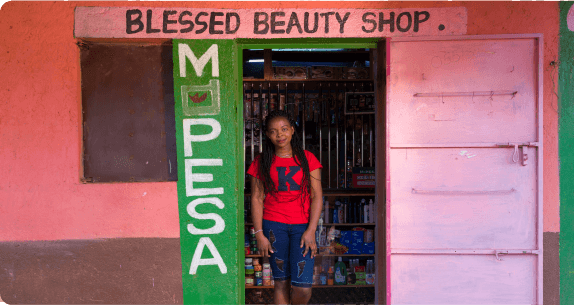Young & Kenyan: 7 years, 13,000 interviews with Kenya’s most important generation
An Essential Guide to the Trends That Will Shape Their Future
Today, 1 in 5 Kenyans are 15-24 years old.1 These 11 million+ people are now the biggest youth population the country has ever seen. This is the generation that will decide Kenya’s future.
At Shujaaz Inc, we’ve been working with young people for over 11 years. We’ve always believed they could transform the future for the better. But we’re not the only ones.
This generation represents the beginning of a demographic shift that global economists have been waiting for. Known as the ‘demographic dividend’, it refers to a change in the shape of a country’s population – when there are more people working and earning, with fewer dependents or children to support.2
The generation who can transform Kenya’s future
Countries across East Asia have already experienced this demographic shift – and it enabled an incredible acceleration in productivity, economic growth and prosperity.3 So far, it’s never happened in Africa. But Kenya has a 15-year window to drive it.4
If Kenya seizes this opportunity, experts predict its per capita income could grow 12x by 2050.5 In fact, it could lead the way forward for the entire developing world. Put simply? This generation could be the most important in Kenya’s history – with ripple effects across the Global South.
Of course, a growing youth population alone doesn’t guarantee economic or social benefits. Seizing an opportunity like this one requires new policies and investment in Kenya’s young population, on a massive scale.6 It’s a huge project – one that will only be successful if young people’s voices, experiences and ideas are heard.
But here’s the problem: this generation doesn't feel heard. In fact, in the midst of the pandemic, 81% of them said their voices, ideas and experiences were ignored.7 Too many of “the people at the top”, as one Shujaaz fan recently put it, just don’t understand them.
And that’s what this report is all about.
Seven years,13,000 interviews
This is the story of Kenya’s most important generation
Every year since 2016 (except 2020, due to restrictions during the Covid-19 pandemic), we’ve held in-depth 1:1 interviews with over 2,000 15-24-year-olds across the country. From Kisumu to Kilifi, our team used census data to ensure we spoke to a nationally-representative group of young people.
We talked about everything: money and work; sex and relationships; community and governance; tech and climate change.
This is what we heard.
This report distils insights from more than 13,000 interviews and seven years of our analysis (and over 11 years of learnings from building Shujaaz Inc!)
You’ll discover the big trends that are shaping this crucial generation’s future. It is a Kenyan story, but the trends we’re seeing have ripple effects across the Global South. If you’re designing policies, programmes or products for young people – this is for you.
1 United Nations Population Division: World Population Prospects 2022
2 PRB (November 26, 2012) Fact Sheet: Attaining the Demographic Dividend |PRB
4 Kenya was on the cusp of the Demographic Dividend as of the 2009 Census; the country launched its Demographic Dividend Model in July 2014, with the project being led by the National Council of Population and Development in partnership with USAID. According to UNFPA, with an average Demographic Window of opportunity lasting 29 years, Kenya has to realise its demographic dividend by around 2038. References: Health Policy Project (2014) Demographic Dividend Model Launched in Kenya. Retrieved from http://www.healthpolicyproject.com/index.cfm?ID=DemDivKenya ; UNFPA Kenya (August 20, 2015) Take advantage of demographic dividend; National Council for Population and Development (2017) Kenya’s Demographic DiviDenD roaDmap (2020-2030).
5 UNFPA Kenya (August 20, 2015) Take advantage of demographic dividend.
6 The African Union Commission, Directorate of Information and Communication (2017). DEMOGRAPHIC DIVIDEND INVESTMENTS IN YOUTH
AU ECHO, Issue 1, pp. 32-36.
7 Shujaaz Inc, SMS survey of Shujaaz fans (N=1,147), April 2020
8 As part of its Monitoring, Learning and Evaluation (MEL) framework, Shujaaz Inc conducts an annual, quantitative survey, with N=2,000+ Kenyan youth aged 15-24, i.e., the key Shujaaz media target audience. The survey uses available Census data (2009 and 2019) and a stratified multistage approach to select young Kenyans to take part in face-to-face computer assisted personal interviews (CAPI), lasting 35-75 minutes. Additional data in this report are drawn from the mixed-method GroundTruth studies conducted quarterly since Shujaaz launched in 2010.
